- When to prune your grape vines
- 1. Dormant season pruning
- 2. Summer pruning
- 3. Berry thinning
- Which grape vine branches to remove
- Removing bunches to improve grape quality
- Why remove bunches?
- When to remove bunches?
- How to remove bunches?
- Considerations for removing bunches
- In conclusion
- Pruning techniques for young grape vines
- 1. Training the main trunk
- 2. Selecting the best canes
- 3. Pruning for structure
- 4. Managing vine vigor
- 5. Timing of pruning
- Pruning techniques for established grape vines
- 1. Prune during dormancy
- 2. Remove old and dead wood
- 3. Thin out excessive growth
- 4. Prune lateral shoots
- 5. Leave a few extra buds
- 6. Remove excessive fruiting canes
- 7. Train the vine to the trellis system
- Tools you’ll need for pruning grape vines
- 1. Hand pruners
- 2. Loppers
- 3. Pruning saw
- 4. Wire cutters
- 5. Gloves
- 6. Safety glasses
- Maintaining grape vine health through pruning
- Why pruning is important
- When to prune grape vines
- Tools for pruning grape vines
- Conclusion
- Troubleshooting common pruning mistakes
- 1. Removing too many canes
- 2. Pruning too late or too early
- 3. Pruning cuts too close or too far
- 4. Neglecting the removal of dead or diseased wood
- 5. Overlooking the importance of training and support
- Question-answer:
- When is the best time to prune grape vines?
- Why is it important to prune grape vines?
- What tools do I need for pruning grape vines?
- How do I prune grape vines for maximum fruit production?
- Can I prune grape vines during the summer?
- What is the purpose of thinning out grape bunches?
- How do I prune a young grapevine?
- Video: How to prune Grape Vines in summer | Grow at Home | RHS
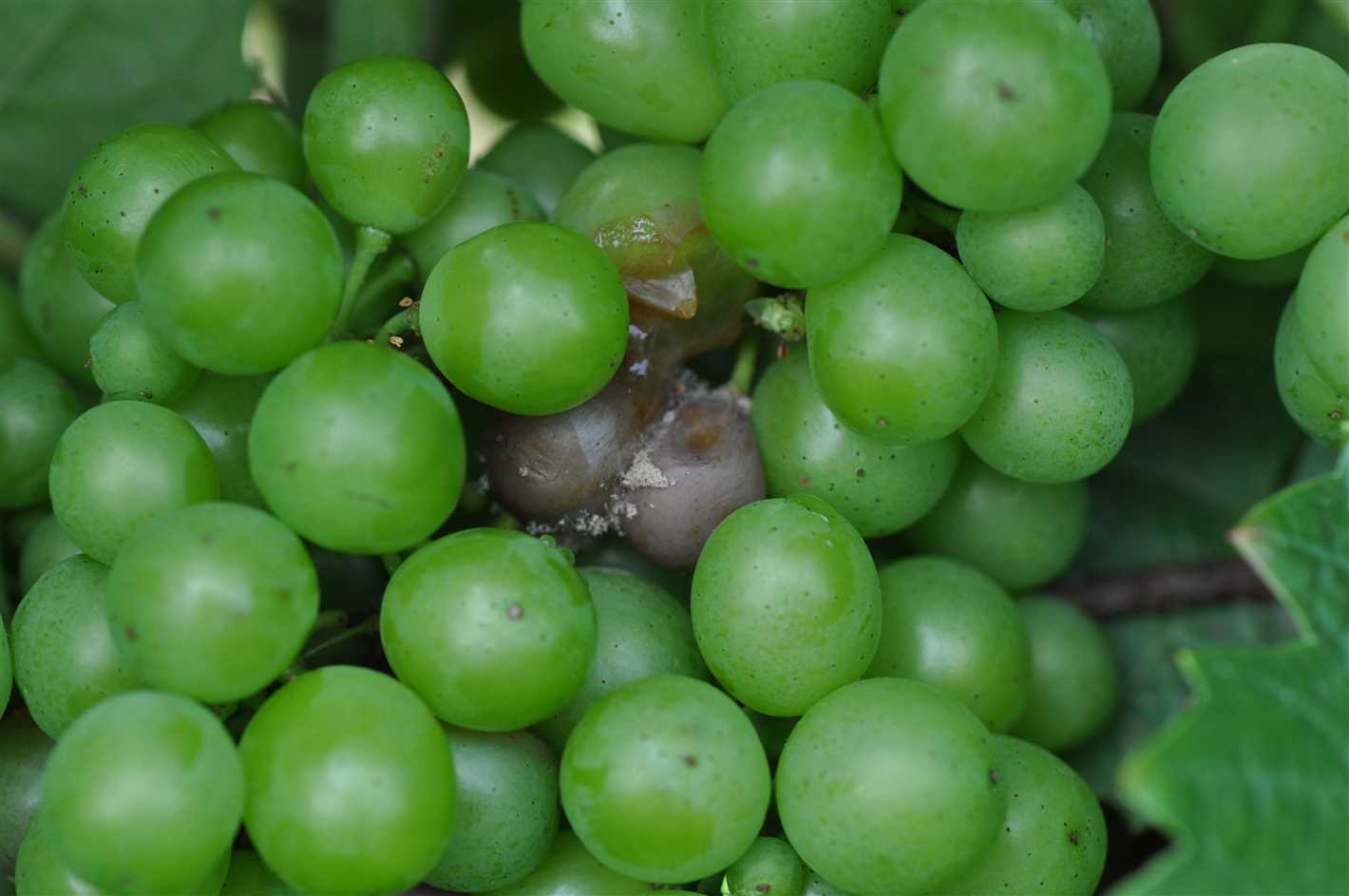
Grapes are a popular fruit grown in many regions around the world, and pruning is an essential part of maintaining healthy and productive grape vines. Pruning involves selectively removing certain parts of the vine, such as shoots, leaves, and bunches, to promote better fruiting and overall vine growth. In this article, we will focus specifically on when and how to remove grape bunches during pruning.
Removing grape bunches during pruning is a common practice that helps improve the quality of the remaining fruit. It allows the vine to concentrate more energy and nutrients to the remaining bunches, resulting in larger, juicier grapes. Additionally, removing excess bunches can help improve air circulation and sunlight penetration, which reduces the risk of disease and promotes even ripening of the grapes.
So, when is the best time to remove grape bunches? The ideal time to remove grape bunches is during the annual pruning process, which typically takes place in late winter or early spring while the vines are dormant. It’s important to wait until the buds have started to swell but are still in the “woolly” stage before removing the bunches. This ensures that you are not removing any viable buds that could potentially develop into new shoots or fruiting canes.
When removing grape bunches, it is essential to use clean, sharp pruning shears to make clean cuts. Start by identifying and removing any damaged, diseased, or weak bunches. These are typically smaller, shriveled, or discolored. Removing them will prevent the spread of disease and allow the vine to focus its resources on healthier bunches.
Tip: It’s also recommended to thin out crowded bunches to allow for better air circulation and sunlight exposure. Aim to leave a space of about 6-8 inches between each remaining bunch.
In conclusion, removing grape bunches during pruning is a beneficial practice that promotes healthier, more productive grape vines. By removing damaged or weak bunches and thinning out crowded bunches, you can improve the quality and size of the remaining fruit. Remember to prune during the correct season and use clean, sharp tools for best results. Happy pruning!
When to prune your grape vines
Pruning grape vines is an essential task to maintain the health and productivity of your plants. It involves removing certain parts of the vine to promote better fruit production and overall plant growth. Knowing when to prune your grape vines is crucial for achieving the best results.
1. Dormant season pruning
The dormant season, which typically occurs in late winter or early spring before buds start to break, is the best time to prune grape vines. Pruning during this time allows the plants to focus their energy on producing new growth and developing healthy fruiting canes.
During the dormant season, it is important to remove any dead, damaged, or diseased wood. These canes can serve as breeding grounds for pests and diseases, so it’s important to get rid of them before they can cause further problems. Additionally, you should also remove any weak or overcrowded shoots.
2. Summer pruning
Summer pruning is often done in addition to the dormant season pruning. This type of pruning involves removing excessive growth and shaping the vine to ensure proper air circulation and sunlight penetration. It also helps to keep the vine more manageable in terms of size and shape.
During summer pruning, it’s essential to remove any lateral shoots or suckers that are growing from the base of the vine or in unwanted areas. These shoots can divert valuable nutrients away from the fruiting canes and affect the overall health of the plant.
3. Berry thinning
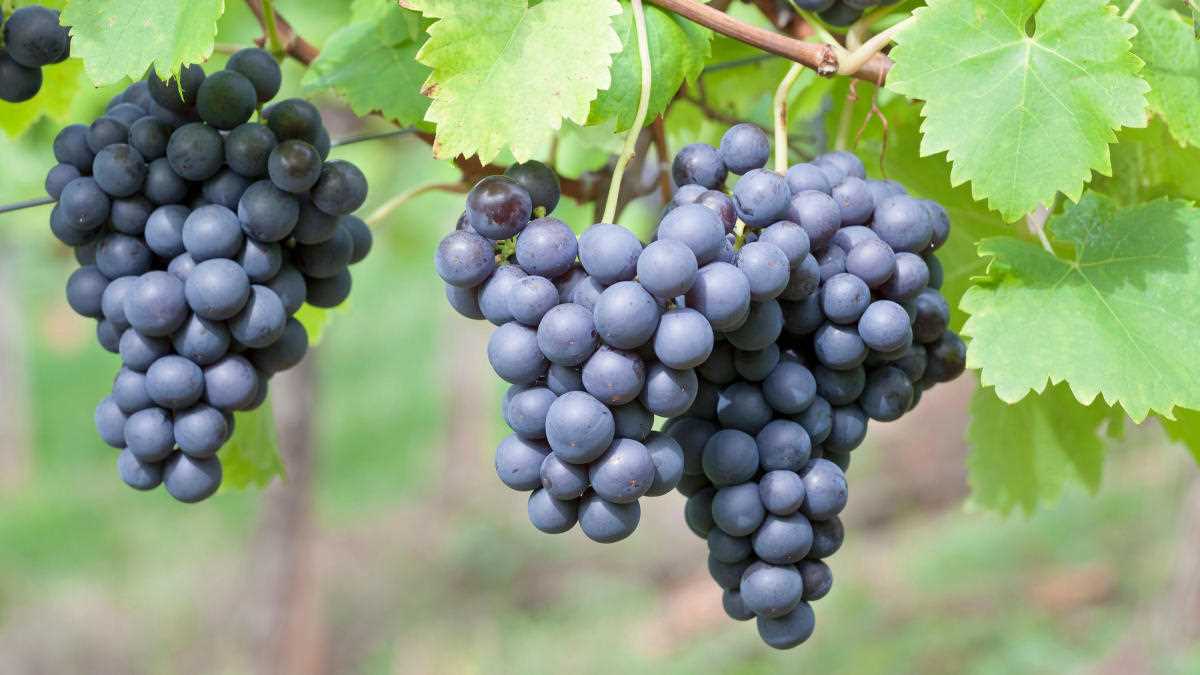
In addition to traditional pruning, grape vines may also require berry thinning. This process involves removing excess grape clusters to improve fruit quality and prevent overcrowding. Berry thinning should be done when the berries are still small and hard, usually around 4-6 weeks after fruit set.
To thin the berries, gently remove some of the clusters, leaving behind the healthiest and best-looking ones. Aim to maintain a distance of 6-10 inches between clusters to ensure proper airflow and prevent diseases.
By following these pruning practices and considering the specific needs of your grape varieties, you can ensure healthy and productive grape vines that produce high-quality fruit.
Which grape vine branches to remove
When pruning grape vines, it is important to know which branches to remove in order to promote healthy growth and maximum fruit production. Here are some guidelines to follow:
- Remove any dead or damaged branches: Dead or damaged branches are not productive and can potentially harm the overall health of the grape vine. These branches can be easily identified by their dry or brittle appearance.
- Remove weak or thin branches: Weak or thin branches are unlikely to produce good quality fruit. By removing these branches, you are allowing the vine to focus its energy on the healthier and more productive branches.
- Remove excess growth: Grape vines can sometimes produce a lot of excessive growth, especially if they are not pruned regularly. Remove any branches that are growing in the wrong direction or are overcrowding the vine. This will help improve air circulation and sunlight penetration, reducing the risk of disease and promoting better fruit development.
- Remove suckers: Suckers are shoots that grow either from the ground or from the base of the grape vine. These shoots are energy thieves, diverting resources away from the main vine. Remove suckers as soon as they appear to ensure the vine’s energy is focused on the main branches.
- Remove lateral branches that are too low or too high: Lateral branches are the side shoots that grow from the main branches. To ensure proper fruit development and easy maintenance, it is important to remove lateral branches that are growing too close to the ground or too high up on the vine. The ideal height for lateral branches is around knee to waist level.
By following these guidelines, you will be able to effectively prune your grape vines and encourage healthy growth and abundant fruit production.
Removing bunches to improve grape quality
Pruning grape vines is an essential task for any grape grower. One important aspect of pruning is removing excess grape bunches to improve grape quality. By strategically removing bunches, you can promote better airflow and sunlight exposure to the remaining grapes, resulting in tastier and healthier fruit.
Why remove bunches?
Removing excess bunches is necessary to prevent overcrowding, which can lead to various problems. Overcrowded bunches can limit airflow and create a favorable environment for diseases and pests. Additionally, when grape bunches are too close together, they can hinder the penetration of sunlight into the canopy, affecting grape ripening and flavor development.
When to remove bunches?
The ideal time to remove bunches is during the early stages of grape development. As the grapes start to grow and reach pea-sized or slightly larger, you can start evaluating the number of bunches per shoot and begin thinning if necessary. Thinning at this stage allows the remaining grapes to receive more nutrients and energy from the vine, resulting in better grape development and flavor.
How to remove bunches?
When removing bunches, it’s important to be gentle and careful not to damage the vine or other bunches. Use clean and sharp pruning shears to make clean cuts close to the base of the unwanted bunches. It is recommended to remove the entire bunch instead of just individual grapes to avoid any negative impacts on the growth and development of the remaining fruit.
When thinning, it’s important to maintain a balanced number of grape bunches per shoot. Experts recommend leaving no more than one or two bunches per foot of shoot length. However, the specific number may vary depending on factors such as grape variety, vine health, and growing conditions.
Considerations for removing bunches
Before removing bunches, it’s crucial to consider the overall health and vigor of the grapevine. Removing too many bunches can put excess stress on the vine, affecting its growth and future fruit production. Therefore, it’s important to find a balance and adapt your thinning practices to suit the specific needs of your grapevines.
Additionally, it’s worth noting that removing bunches is not the only factor that determines grape quality. Proper canopy management, irrigation, fertilization, and disease control also play important roles in achieving high-quality grapes.
In conclusion
Thinning grape bunches is a crucial step in grapevine pruning to improve grape quality. By removing excess bunches, you can enhance airflow, promote sunlight penetration, and ultimately produce tastier and healthier grapes. However, it’s important to strike a balance and consider the overall health of the vine when removing bunches to avoid negative impacts on grape production.
Pruning techniques for young grape vines
Pruning young grape vines is an essential practice to ensure proper growth and development. Here are some important techniques to follow for pruning young grape vines:
1. Training the main trunk
When a grape vine is first planted, it is important to select a strong, straight shoot to serve as the main trunk. All other shoots should be pruned back to the ground. The main trunk should be trained to grow vertically by attaching it to a support system such as a trellis or stake.
2. Selecting the best canes
During the first few years of a grape vine’s growth, it is important to select the best canes to develop strong arms. In the first year, allow one or two canes to grow from the main trunk and remove all other shoots. In the second year, choose two more canes from the arms that developed in the first year and remove the remaining shoots.
3. Pruning for structure
As the grape vine grows, it is important to prune for structure and training. Remove any weak or overcrowded shoots to allow for good air circulation and sunlight penetration. Prune back the lateral shoots to maintain a balanced growth and encourage the development of fruiting buds.
4. Managing vine vigor
Pruning young grape vines also helps to manage their vigor. To control the growth of the vine, remove excess shoots and buds. This will help to balance the vegetative growth and fruit production. Pruning can also help to prevent the vine from becoming too dense, which can lead to disease and pest issues.
5. Timing of pruning
The timing of pruning young grape vines is crucial. It is best to prune during the dormant season, which is usually in late winter or early spring before the buds start to swell. Pruning at this time allows the wounds to heal before the new growth begins.
By following these pruning techniques for young grape vines, you can promote healthy growth, optimize fruit production, and ensure the longevity of your grape vineyard.
Pruning techniques for established grape vines
Once grape vines are established, pruning becomes an essential practice to ensure healthy growth and maximize fruit production. Here are some pruning techniques to follow:
1. Prune during dormancy
It is best to prune grape vines during their dormant period, which is typically in late winter or early spring before new growth starts. Pruning at this time promotes better airflow and reduces the risk of disease.
2. Remove old and dead wood
Start by removing any old or dead wood from the grape vine. This helps to stimulate new growth and prevents the spread of disease. Cut back the wood to the main trunk or a healthy lateral branch.
3. Thin out excessive growth
If the grape vine has developed excessive growth, it is important to thin it out. This allows for better sunlight penetration and airflow, which promotes healthy development of the vine and prevents diseases such as mildew.
4. Prune lateral shoots
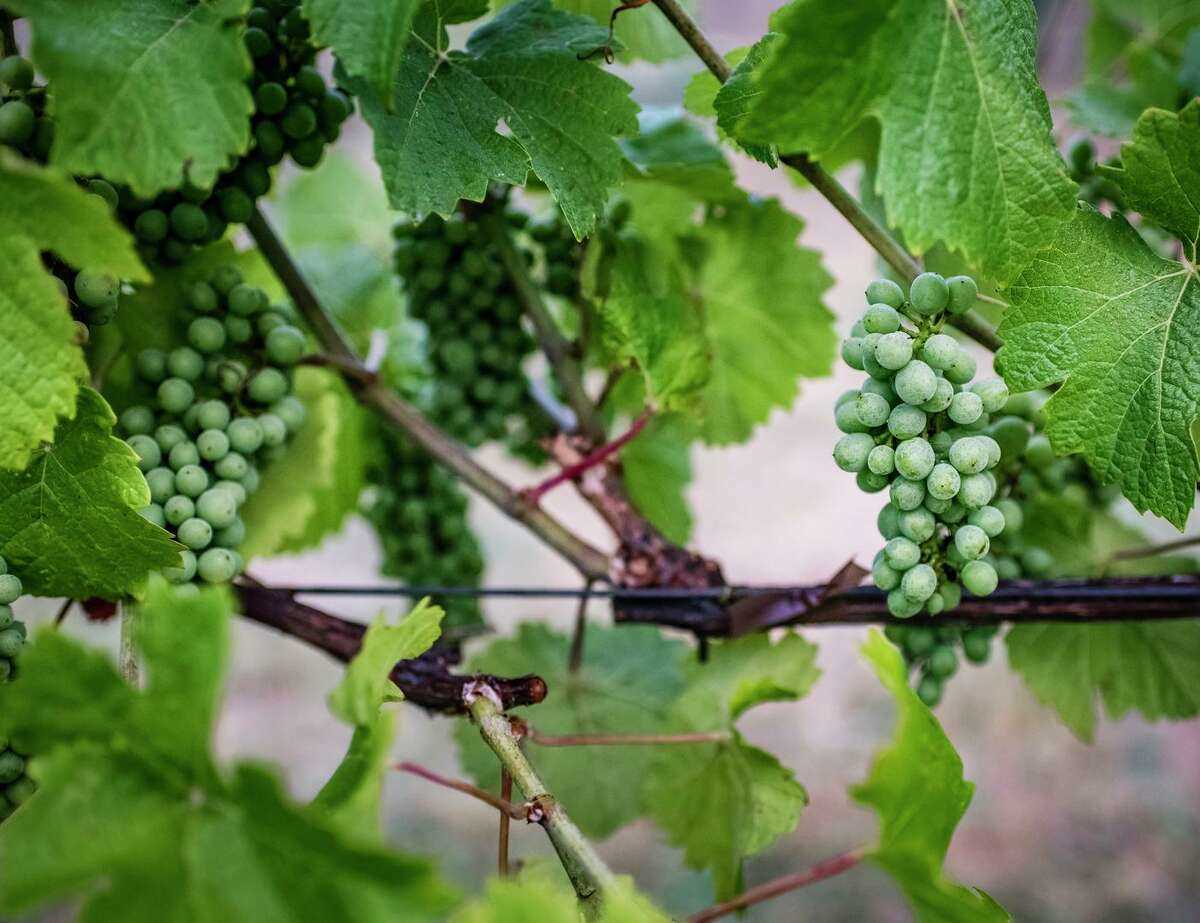
Prune lateral shoots to a desired length, depending on the variety of grape and the trellis system used. This helps to control the growth and direction of the vine, making it easier to manage and harvest.
5. Leave a few extra buds
When pruning, leave a few extra buds on each cane to account for potential bud damage or loss. This ensures that the vine will still have enough buds for fruit production even if some are damaged.
6. Remove excessive fruiting canes
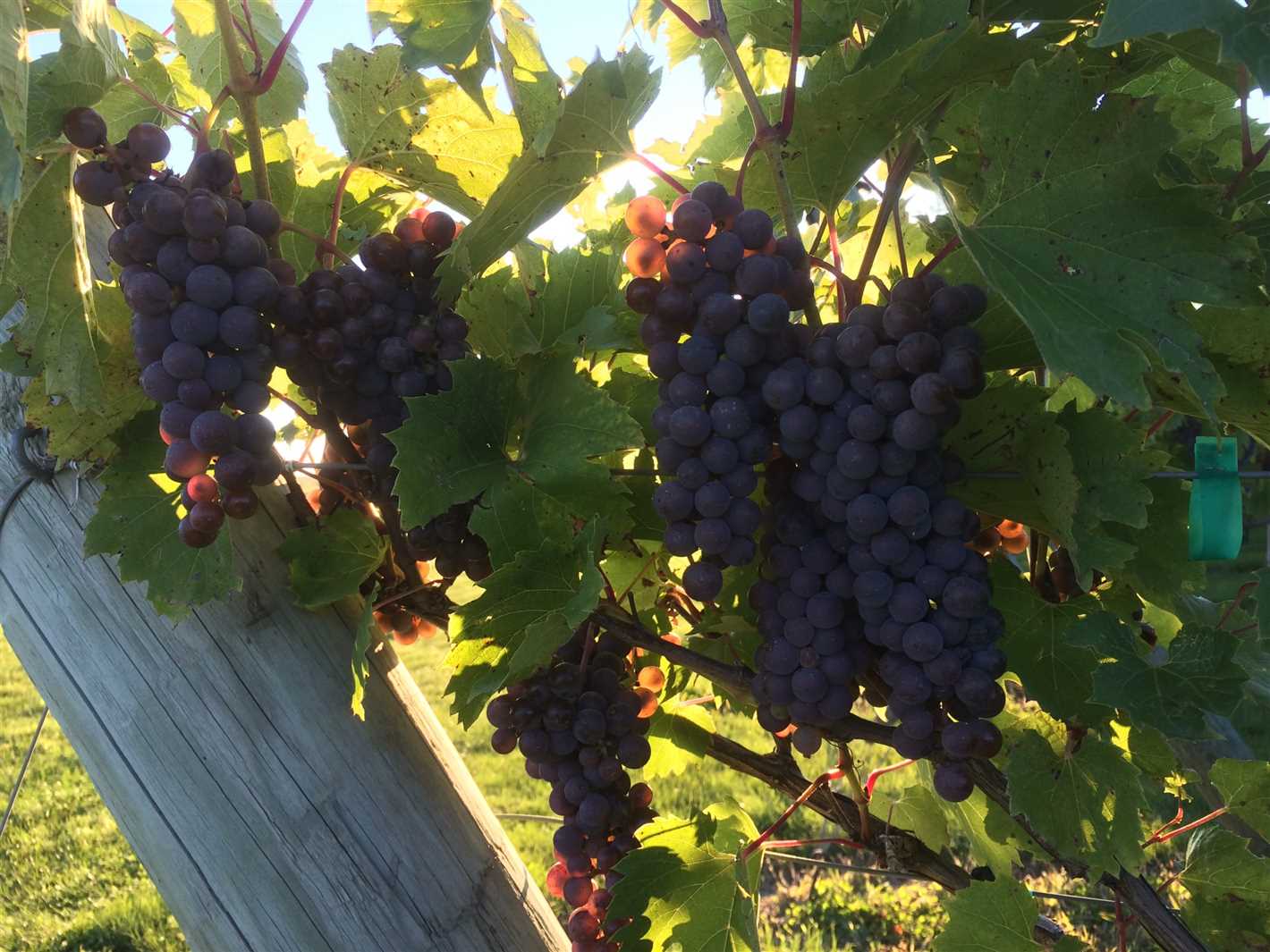
If the grape vine has an excessive number of fruiting canes, it is important to remove some to prevent overcrowding. Overcrowded vines produce smaller fruit and can also be more prone to disease and pests.
7. Train the vine to the trellis system
Lastly, while pruning, make sure to train the vine to the desired trellis system. This helps to support the vine and the developing fruit, making it easier to manage and harvest.
By following these pruning techniques for established grape vines, you can promote healthy growth, maximize fruit production, and maintain a well-managed vineyard.
Tools you’ll need for pruning grape vines
Pruning grape vines is an essential task to maintain the health and productivity of your grapevines. To effectively prune your grape vines, you’ll need a few basic tools.
1. Hand pruners
Hand pruners, also known as secateurs or pruning shears, are a must-have tool for grape vine pruning. These specialized pruning tools allow you to make clean cuts on small branches and canes.
2. Loppers
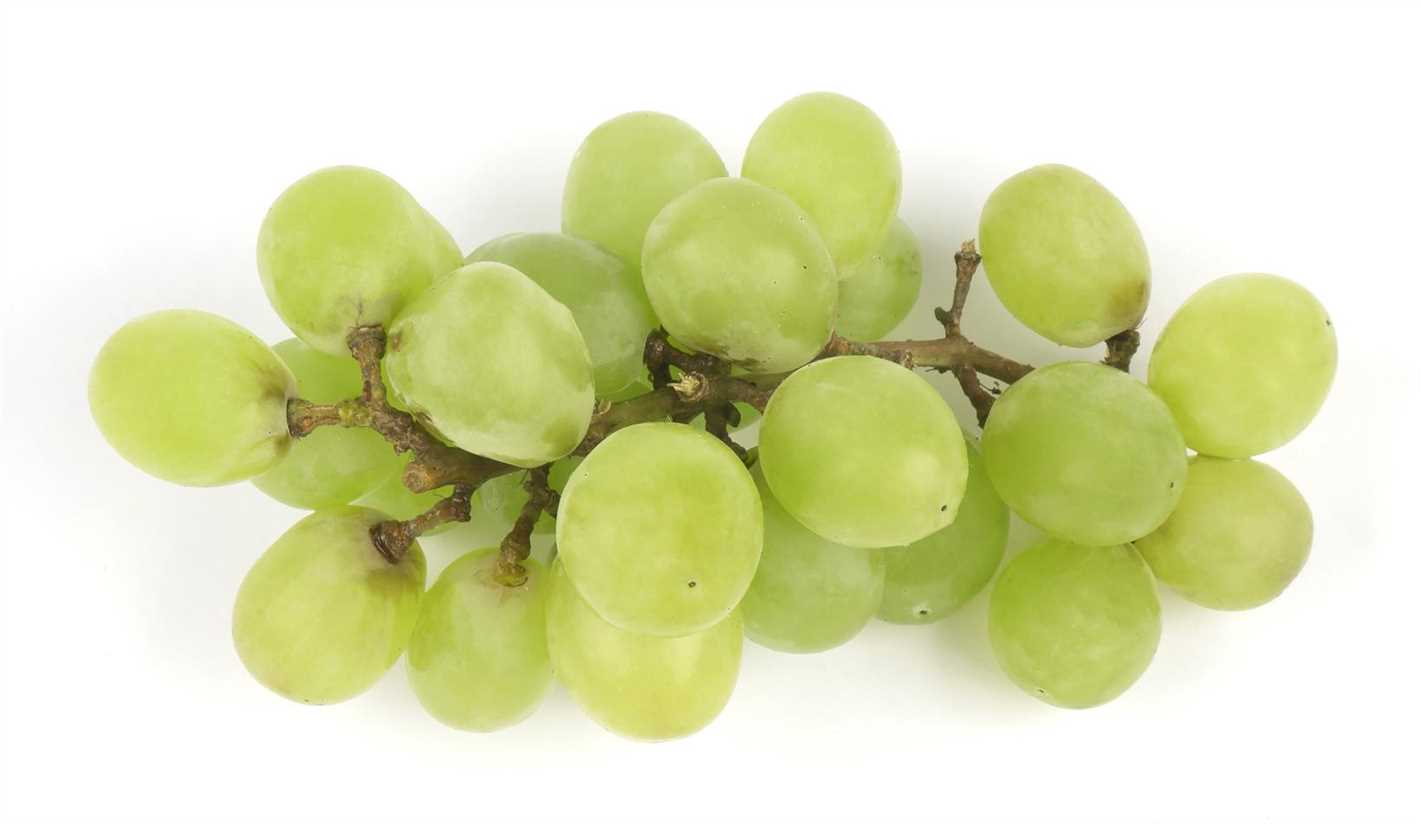
Loppers are a longer-handled version of hand pruners and are used for cutting larger branches or canes. They provide more leverage and cutting power, making them suitable for thicker grapevine growth.
3. Pruning saw
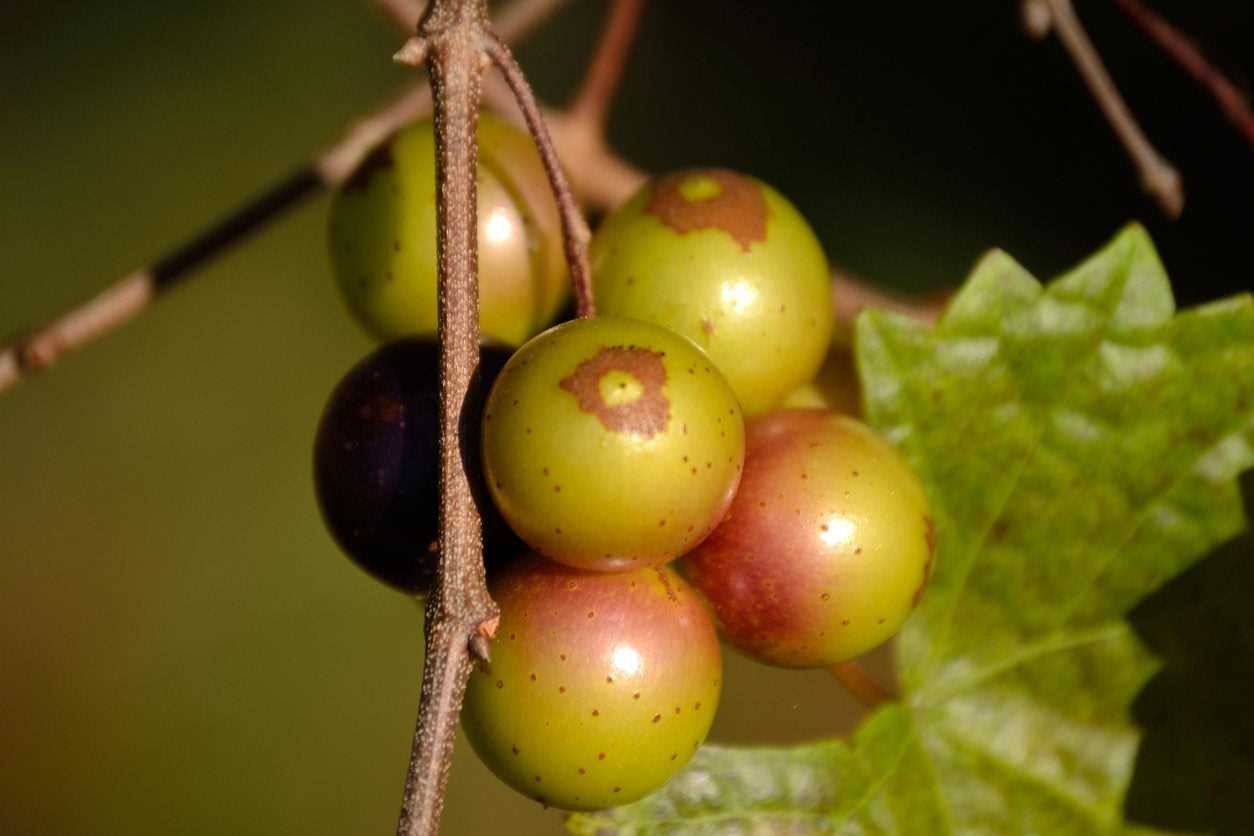
A pruning saw is necessary for cutting thicker branches or removing old wood. The saw can handle larger cuts that are beyond the capacity of hand pruners or loppers.
4. Wire cutters
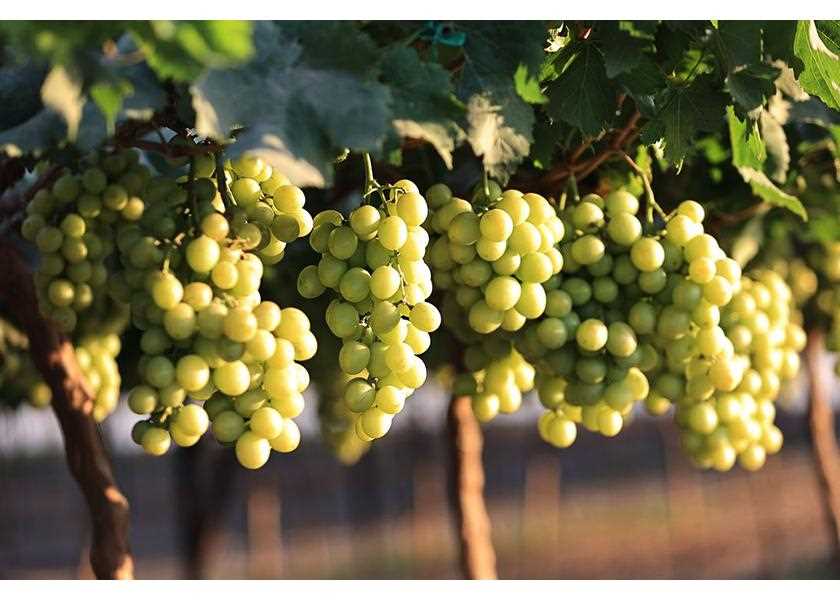
Wire cutters are needed if you need to remove or adjust the wire supports that hold your grape vines. These tools are used to cut through the wires securely without damaging the plant.
5. Gloves
When pruning grape vines, it is advisable to wear gloves to protect your hands from cuts, scrapes, and thorns. Choose gloves made specifically for gardening, preferably with a good grip and protection.
6. Safety glasses
While pruning grape vines, there is a potential for small pieces of wood or debris to fly into your eyes. Wearing safety glasses can help protect your eyes from any hazards.
With these essential tools in hand, you’ll be well-equipped to prune your grape vines effectively and ensure the health and productivity of your plants.
Maintaining grape vine health through pruning
Pruning is an essential practice for maintaining the health and productivity of grape vines. By properly pruning your grape vines, you can remove diseased or damaged wood, improve air circulation, and ensure that the vine is receiving enough sunlight.
Why pruning is important
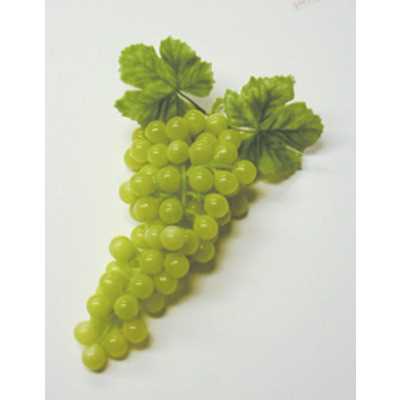
- Disease prevention: Pruning allows you to remove any diseased or damaged wood from the vine. This helps prevent the spread of diseases, such as powdery mildew or black rot, which can weaken the plant and reduce grape yields.
- Air circulation: Pruning opens up the canopy of the vine, allowing for better air circulation. Good airflow helps to reduce the risk of fungal diseases by preventing moisture from lingering on the leaves and grapes.
- Sunlight exposure: Pruning helps ensure that the grapes receive adequate sunlight. Sunlight is essential for the development of sugars in the grapes, which contribute to their flavor and ripeness.
- Shape and structure: Pruning helps maintain the desired shape and structure of the vine. By removing excess growth and training the vine properly, you can ensure that it grows in a way that is manageable and easy to harvest.
When to prune grape vines
The timing of grape vine pruning depends on the climate and the specific variety of grape. In general, dormant pruning is done in late winter or early spring before the buds break. This allows the vine to focus its energy on new growth during the growing season.
It’s also important to avoid pruning during periods of freezing temperatures, as this can cause damage to the vine.
Tools for pruning grape vines
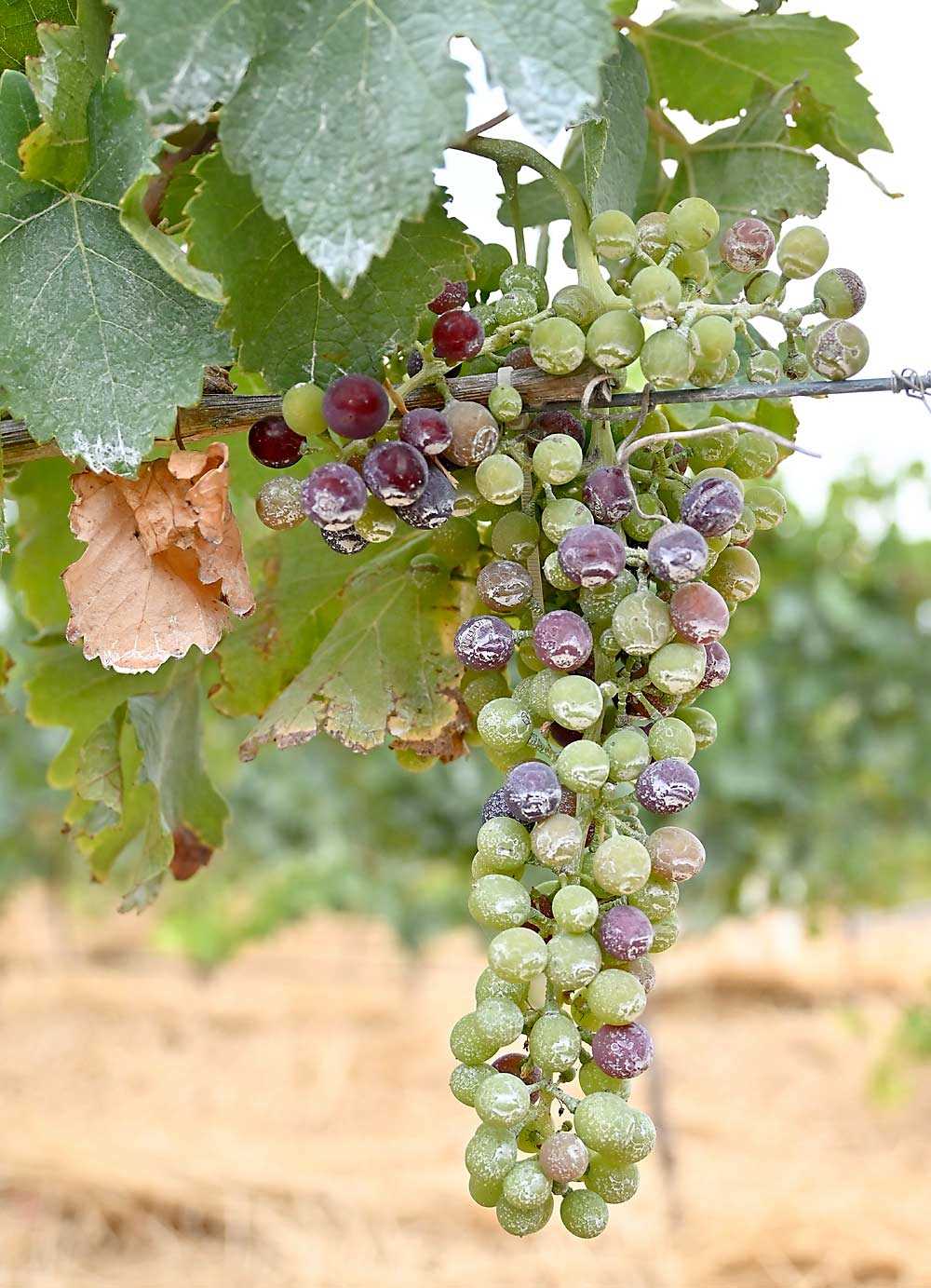
When pruning grape vines, it’s important to use the right tools to ensure clean and precise cuts. Some common tools used for grape vine pruning include:
- Pruning shears: These are used for cutting small branches and canes.
- Loppers: These are used for thicker branches and canes that are too big for pruning shears.
- Pruning saw: This is used for larger cuts and removing thicker wood.
- Gloves: Wearing gloves can protect your hands from sharp thorns and cuts while pruning.
Conclusion
Pruning is a critical aspect of maintaining grape vine health and maximizing grape production. By understanding the importance of pruning and following proper pruning techniques, you can ensure that your grape vines stay healthy and produce high-quality grapes year after year.
Troubleshooting common pruning mistakes
Pruning grape vines can be a delicate task, and even experienced gardeners can make mistakes. Here are some common pruning mistakes to avoid and how to troubleshoot them:
1. Removing too many canes
One of the most common mistakes is removing too many canes during pruning. Removing too many canes can lead to an imbalance in the vine, resulting in reduced fruit production and poor vine growth. To troubleshoot this mistake, try to leave a balanced number of canes during pruning. Leave enough canes to provide a good framework for the vine and an adequate number of fruiting buds.
2. Pruning too late or too early
Pruning grape vines at the wrong time can have detrimental effects on the vine’s growth and fruit production. Pruning too late can delay bud break and result in a shorter growing season, while pruning too early can expose the buds to potential damage from frost. To troubleshoot this mistake, familiarize yourself with the specific pruning requirements of your grape variety and consult a local gardening expert or agricultural extension office for guidance on the optimal pruning time in your area.
3. Pruning cuts too close or too far
Making pruning cuts too close or too far from the bud can have negative consequences. Pruning too close to the bud can damage the bud, while pruning too far from the bud can lead to the development of unnecessary and inefficient secondary shoots. To troubleshoot this mistake, aim to make clean cuts that are approximately 1/4 inch above the bud. This will help promote healthy bud development and minimize unnecessary secondary growth.
4. Neglecting the removal of dead or diseased wood
Failure to remove dead or diseased wood can have a significant impact on the overall health of the grape vine. Dead or diseased wood can harbor pests and diseases, and if left unattended, can spread to the rest of the vine. Troubleshoot this mistake by thoroughly inspecting the vine during pruning and removing any dead or diseased wood. Make clean cuts slightly beyond the affected area to ensure complete removal.
5. Overlooking the importance of training and support
Pruning is not only about cutting away unwanted growth; it also involves training the vine and providing proper support. Neglecting to train the vine and provide a sturdy support system can result in tangled growth and increased risk of damage from wind and other environmental factors. Troubleshoot this mistake by incorporating training and support into your pruning routine. Use trellises, wire systems, or other suitable structures to guide the vine’s growth and provide support.
By avoiding these common pruning mistakes and taking the necessary precautions, you can ensure the healthy growth and maximum productivity of your grape vines.
Question-answer:
When is the best time to prune grape vines?
The best time to prune grape vines is during late winter or early spring, before the start of the growing season. This ensures that the vines are dormant and reduces the risk of damaging the plants.
Why is it important to prune grape vines?
Pruning grape vines is important for several reasons. It helps to maintain the health and vigor of the plants, promotes better air circulation and light penetration, and encourages the growth of new shoots and fruiting buds. Pruning also helps to control the size and shape of the vines, making it easier to manage and harvest the fruit.
What tools do I need for pruning grape vines?
For pruning grape vines, you will need a good pair of pruning shears or secateurs. These will be used to remove smaller branches and twigs. For thicker branches, you may need a pruning saw or lopper. It’s also a good idea to have a pair of gloves and protective eyewear for safety.
How do I prune grape vines for maximum fruit production?
To prune grape vines for maximum fruit production, you should focus on removing old wood and non-fruitful shoots. This allows the plant to put more energy into developing new shoots and fruiting buds. It’s also important to thin out the bunches of grapes, leaving only the healthiest and best-looking ones. This helps to improve the quality of the fruit and reduces the risk of disease.
Can I prune grape vines during the summer?
It’s generally not recommended to prune grape vines during the summer, as this can disrupt the plants’ growth and potentially damage them. Summer pruning is usually done only for specific reasons, such as removing diseased or damaged wood. The best time for pruning grape vines is late winter or early spring.
What is the purpose of thinning out grape bunches?
Thinning out grape bunches is an important practice in grapevine management. By removing some of the grapes from each bunch, you allow the remaining grapes to grow larger and sweeter. Thinning also improves air circulation and reduces the risk of diseases and pests. It’s best to thin the grape bunches when they are still small and firm.
How do I prune a young grapevine?
To prune a young grapevine, you should focus on developing a strong framework of branches. Start by selecting the main stem and a few well-placed lateral branches. Remove any other shoots or suckers that emerge from the base of the vine. As the vine grows, train the lateral branches along a trellis or support system. Prune back the main stem to encourage the growth of secondary branches.







